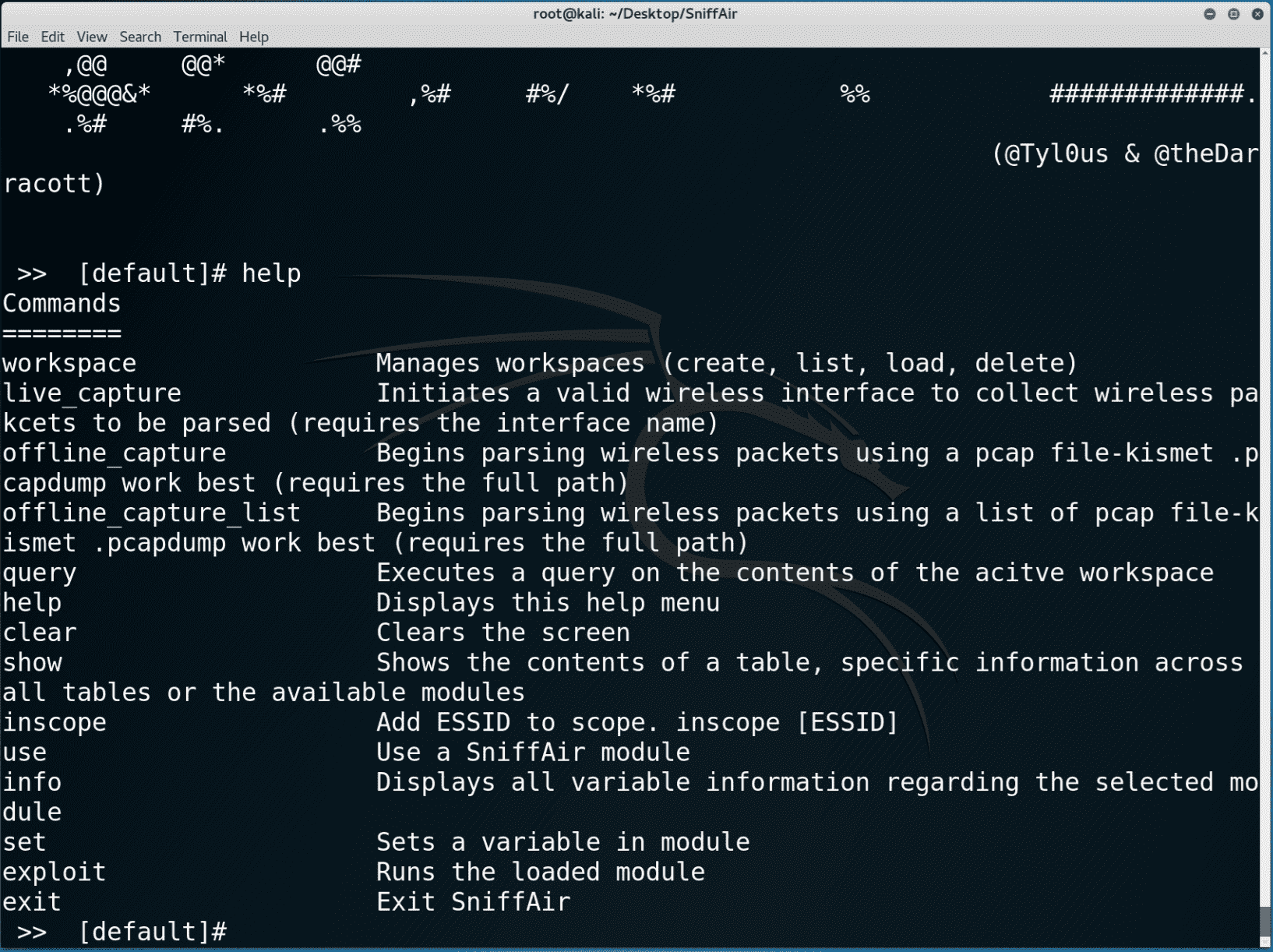SniffAir v3.0 releases: A framework for wireless pentesting

SniffAir
SniffAir is an open-source wireless security framework. Sniffair allows for the collection, management, and analysis of wireless traffic. In additional, SniffAir can also be used to perform sophisticated wireless attacks. SniffAir was born out of the hassle of managing large or multiple pcap files while thoroughly cross-examining and analyzing the traffic, looking for potential security flaws or malicious traffic.
SniffAir is developed by @Tyl0us and @theDarracott
Changelog v3.0
- Migrated sniffer module from Airodump-ng to Kismet backend
- Added a background function for sniffer module
New modules added:
- Handshaker – Parses Database or .pcapdump Files Extracting the Pre-Shared Handshake for Password Guessing (Hashcat or JTR Format).
- MAC Changer – Changes The Mac Address of an Interface.
- Probe Packet – Sends Out Deauth Packets Targeting SSID(s).
- Proof Packet – Parses Database or .pcapdump Files Extracting all Packets Related to the Inscope SSDIS.
- Wigle Search SSID – Queries wigle for SSID (i.e. Bob’s wifi).
- Wigle Search MAC – Queries wigle for all observations of a single mac address.
Install
git clone https://github.com/Tylous/SniffAir.git
cd SniffAir
python setup.py
Usage
Begin
First, create or load a new or existing workspace using the command workspace create <workspace> or workspace load <workspace> command. To view all existing workspaces use the workspace list command and workspace delete <workspace> command to delete the desired workspace:
>> [default]# workspace
Manages workspaces
Command Option: workspaces [create|list|load|delete]
>> [default]# workspace create demo
[+] Workspace demo created
Load data into the desired workplace from a pcap file using the command offline_capture <the full path to the pcap file>. To load a series of pcap files use the command offline_capture_list <the full path to the file containing the list of pcap name> (this file should contain the full patches for each pcap file).
>> [demo]# offline_capture /root/sniffair/demo.pcapdump
\
[+] Completed
[+] Cleaning Up Duplicates
[+] ESSIDs Observed
Show Command
The show command displays the contents of a table, specific information across all tables or the available modules, using the following syntax:
The query command can be used to display a unique set of data based on the parameters specified. The query command uses sql syntax.
Modules
Modules can be used to analyze the data contained in the workspaces or preform offensive wireless attacks using the use <module name> command. For some modules, additional variables may need to be set. They can be set using the set command set <variable name> <variable value>:
>> [demo]# show modules
Available Modules
[+] Run Hidden SSID
[+] Evil Twin
[+] Captive Portal
[+] Auto EAP
[+] Exporter
>> [demo]#
>> [demo]# use Captive Portal
>> [demo][Captive Portal]# info
Globally Set Varibles
=====================
Module: Captive Portal
Interface:
SSID:
Channel:
Template: Cisco (More to be added soon)
>> [demo][Captive Portal]# set Interface wlan0
>> [demo][Captive Portal]# set SSID demo
>> [demo][Captive Portal]# set Channel 1
>> [demo][Captive Portal]# info
Globally Set Varibles
=====================
Module: Captive Portal
Interface: wlan0
SSID: demo
Channel: 1
Template: Cisco (More to be added soon)
>> [demo][Captive Portal]#
Once all variables are set, then execute the exploit command to run the desired attack.
Export
To export all information stored in a workspace’s tables using the Exporter module and setting the desired path.
Copyright (c) 2017 Matthew Eidelberg
Source: https://github.com/Tylous/





